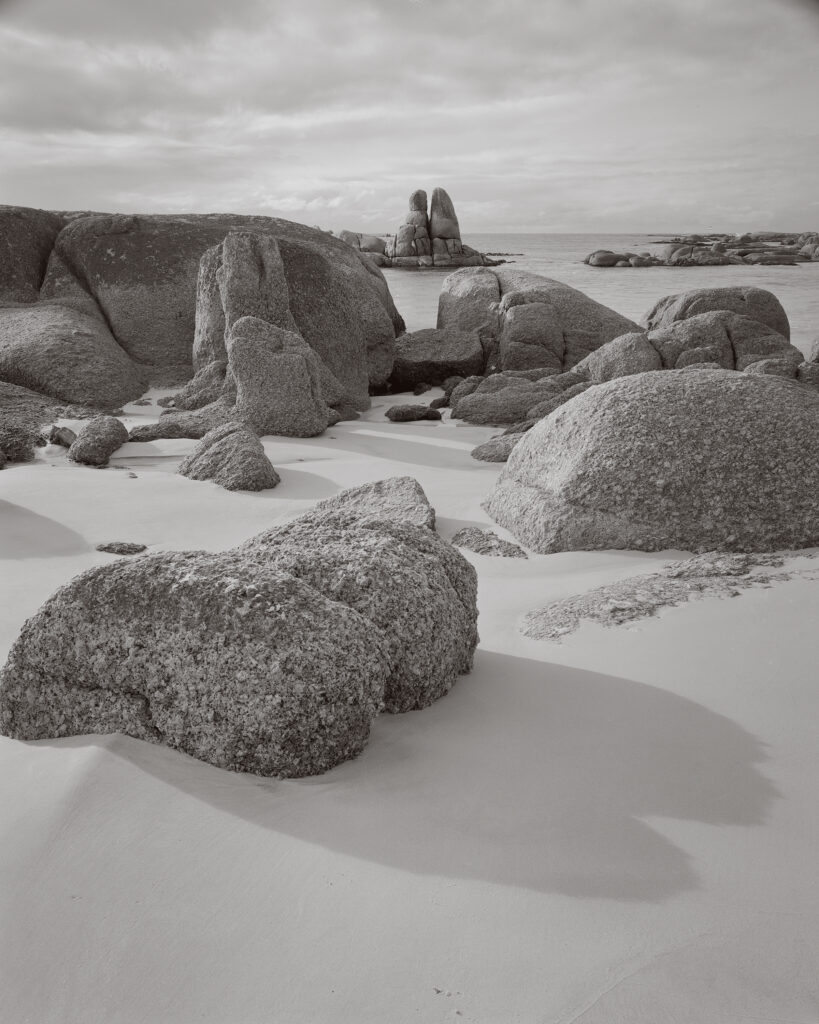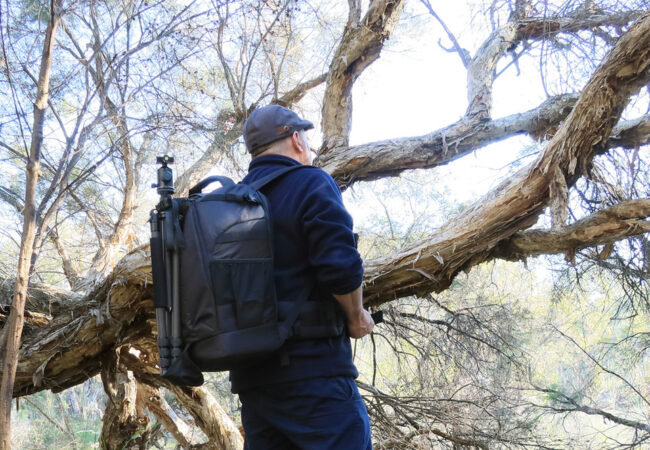
Review: Bergger PMK film developer – David Tatnall
Pyrogallol (Pyro) was one of the first developing agents created and was popular in the 19th century. However, despite the outstanding negative quality that traditional pyro produced, it was regarded as problematic to use and lost favour as a standard developer when easier to use developing agents were discovered. It regained popularity with fine art and alternative photography practitioners in the 20th century when photographers such as Edward Weston began using it.
I first became aware of pyro developer in the 1970’s through Melbourne photographer Ian Lobb. Ian’s prints have a luminosity and strength that showcase pyro’s tonality. I used the ABC Pyro formulation mixed up from powder chemicals for a long period of time until the availability of the chemicals became problematic.
There are several different variations of pyro developers including: ABC Pyro, Pyro 510, Pyrocat-HD and PMK that are available today.
This review is about Bergger PMK. PMK stands for Pyro – Metol – Kodalk (Kodalk is a Kodak trade name for sodium metaborate).
This version of the developer was formulated by Gordon Hutchings to create a more universal developer adapted to a wide range of modern films and light conditions.
PMK is a tan staining developer. The stain masks silver grain and gives a less grainy smoother look to negatives. When a stained negative is printed on variable contrast silver papers the yellowish/brown stain acts like a low-contrast variable contrast filter resulting in a more tonal image. This staining and tanning can provide a definite increase in both the printing quality of the negative and its capacity to record subtle tonality and highlight separation. It also masks inherent grain and increases acutance.

Bergger PMK is a two-part liquid developer: part A is 250ml, part B is 500ml. This concentrate will make 25 litres of working solution. The shelf life of the stock solution is exceptionally long. Working solution is mixed 1+ 2+ 100 and should be used straight away. Leaving the working solution too long may cause oxidation resulting in negatives tanned more brown than required.
To make a working solution of PMK start with a 1000ml of water at 21ºc add 10ml of part A, then add 20ml of part B, at this stage the liquid will change from a grey/green to pale amber. You now have 1030ml of working solution. With this you can process either: two sheets of 8×10, eight sheets of 4×5, two rolls of 120 or two rolls of 135.36.

There are a few modifications in processing with PMK: pre wetting of the film for 3 to 5 minutes is recommended to ensure even development and the use if a non-acidic stop bath will help preserve the negative stain.
PMK developer decreases film speed (a list of film types and suggested ISO settings and development times can be seen on Bergger’s data sheet).
I have had great success using FP4+ rated at 80 ISO and developed for 10 minutes at 21ºc. I process sheet film in trays. Bergger PMK can also be used in either deep tanks or daylight tanks.
The quality of the negatives produced with Bergger PMK have increased sharpness, very fine grain and low fog, making the printing of high-quality prints with subtle tonality on fibre-based variable contrast paper a joy.
Compared to the older variations of pyro developers Bergger PMK is a very easy developer to use, shelf life of the stock solution is outstanding. With it it’s possible to process roll film or sheet film easily with predicable and repeatable results. Negatives can be scanned by drum or flatbed scanners easily with very good results.
In Australia Bergger PMK and other Bergger products are available at Gold Street Studios.
Below are some recent silver gelatin prints made from FP4+ 4×5 negatives that have been processed in Bergger PMK.








This is a great review David – My favourite dev for the last 18 plus years.
Thanks very much Ellie.
Thanks David for you informative review. I purchased some PMK developer from Gold St 12 months ago. I processed a few 4×5 test negatives but have yet to see how they print. Your article has reminded me on to completing my testing!
Thanks Alex. They print very well, I’m sure you’ll be happy.
I use only PMK (that I mix from raw chemicals (a la Hutchings) except for a few specialist films. David’s review summarises the advantages very clearly.
Robert, thanks. This liquid version is very easy to use and produces consistent negatives.
Great review David and no surprises with the exceptional results Pyro developers can provide.
PMK is a great advance over the Pyro formulae used in the 70’s that were at best fairly unpredictable – and sometimes disastrous!
While some people prefer Pyrocat HD which seems to work better in Jobo rotary processors I think PMK is just as good.
Pyro 510 developed by Jay DeFehr is being touted as even better with a 6 year shelf life and a single solution developer mixed at 1:100.
It has potential for stand development when diluted further to 1:500!
It is supplied from the UK by Zone Imaging and can be purchased locally from Decisive Moments in Melbourne.
Thank you Brian. I used ABC pyro mixed up from powder in the 1970’s and 80’s. When successful it was stunning, but, yes disastrous at its worst. I really like using this Bergger PMK in liquid form it’s so predictable and easy to use with outstanding results.